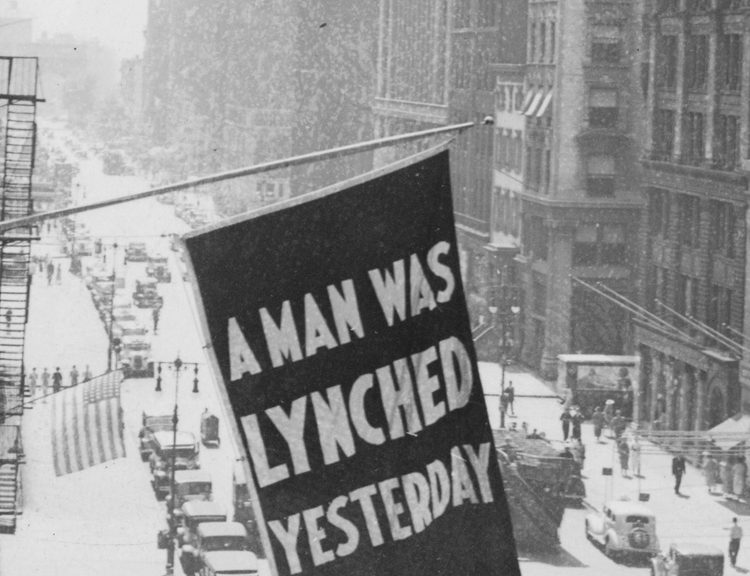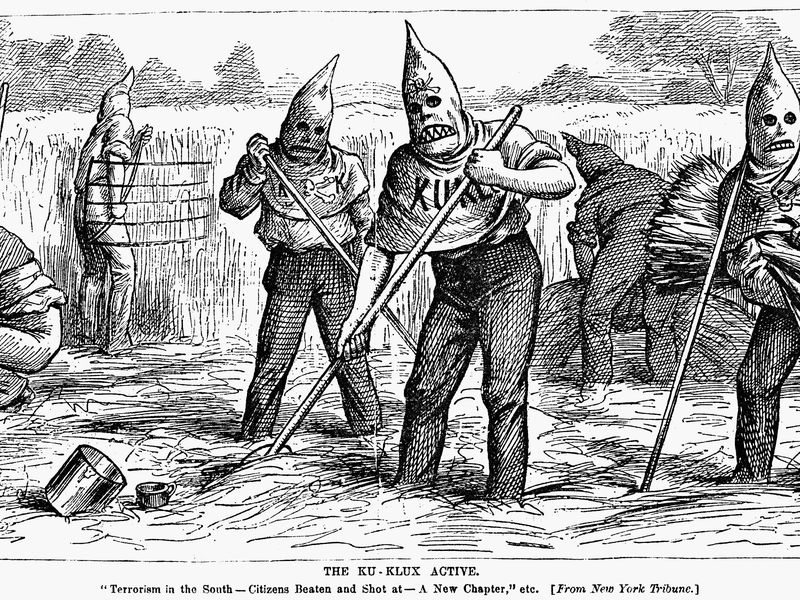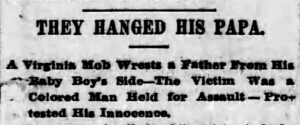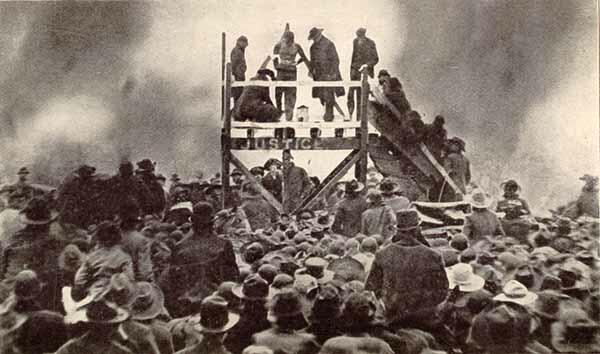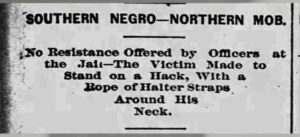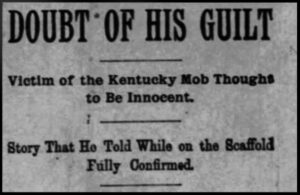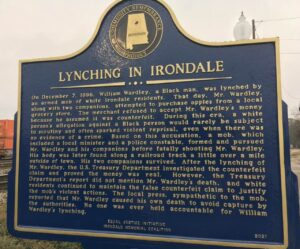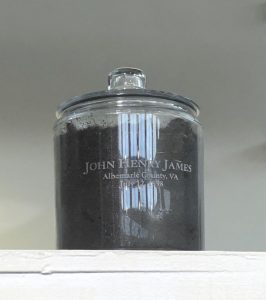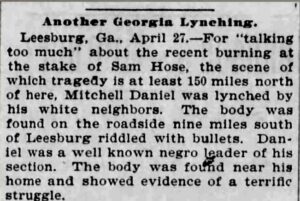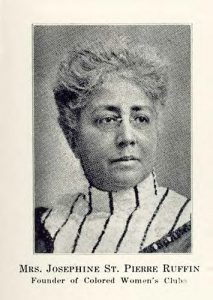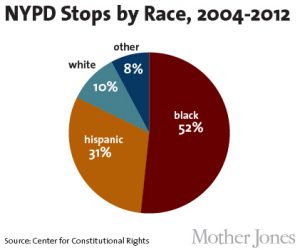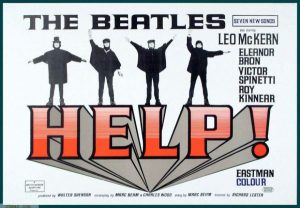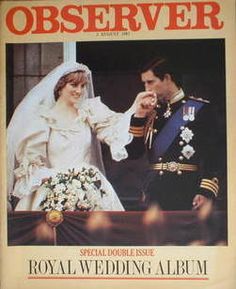Never Forget American Lynching
19th Century America
Abraham Lincoln. Gettysburg 1863. “…we here highly resolve these dead shall not have died in vain”
FDR about December 7, 1941. A “…date that would live in infamy.”
George W Bush. September 11. “…None of us will ever forget this day.”
Never Forget, but…
Sadly, too many Americans too easily forget other equally historic events. Even more sadly, too many Americans actually refuse and are angered when reminded of these other tragic American events.
Never Forget American Lynching
According to the NAACP, from 1882-1968, 4,743 lynchings occurred in the United States. 3,446 of those were blacks.
The Equal Justice Initiative states that the lynching of African Americans was terrorism, a widely supported campaign to enforce racial subordination and segregation. The EJI has published a well-documented report called Lynching in America: Confronting the Legacy of Racial Terror.
And among its many other works, the EJI posts a daily article about equal justice in America.
Those posts are the foundation of this blog piece.
It is not comfortable reading.
It is not a complete list.
Knights of the White Camelia
September 28, 1868: one of the worst outbreaks of violence during Reconstruction took place in Opelousas, La. The event started with three local members of the KKK-like Knights of the White Camelia beating newspaper editor Emerson Bentley, who had promoted voter registration and education for all. After some African Americans came to his rescue, bands of armed white mobs roamed the countryside and began killing. More than 200 African Americans and 30 whites died in the Opelousas Massacre, according to estimates. [Smithsonian story]
Never Forget American Lynching
1870s
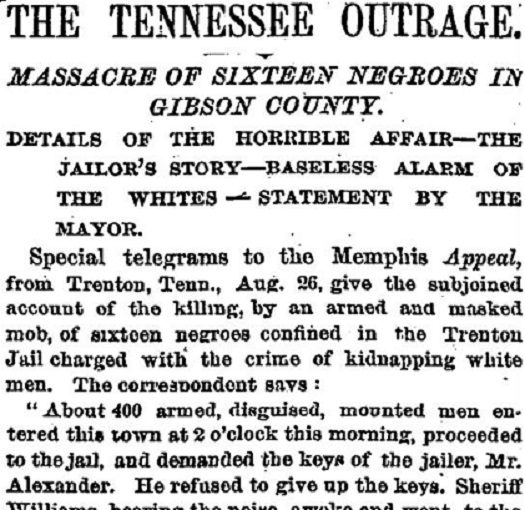
August 26, 1874: sixteen African American men were held in the Gibson County Jail in Trenton, Tennessee, transferred from Picketsville, a neighboring town where they’d been arrested and accused of shooting at two white men.
Around 2:00 a.m. that morning, 400 – 500 masked men, mounted on horses and armed with shot guns, demanded entrance to the Gibson County Jail. The men confronted the jailer and threatened to kill him if he did not relinquish the keys to the cell holding the men. After the jailer gave the leader of the mob the key, the members of the mob bound the men by their hands and led them out of the jail cell. The jailer would later testify that he soon heard a series of gun shots in the distance.
Upon investigation soon after the kidnapping, the jailer found six of the men lying along nearby Huntingdon Road – four were dead, their bodies “riddled with bullets.” Two of the men, found wounded but alive, later died before receiving medical attention. The bodies of the ten remaining men were later found at the bottom of a river about one mile from town.
Local white officials denounced the lynching and held an inquest that concluded the men were killed by “shots inflicted by guns in the hands of unknown parties.” The town mayor also expressed local whites’ fears that black people throughout the county were arming themselves in plans to exact retaliatory violence. Just one day after the mass murder of sixteen black men by hundreds of white men who remained unidentified and free, the mayor ordered police to take all guns belonging to Trenton’s black residents and threatened to shoot those who resisted.
August 30, 1874: Thomas Abney chose a guard of about twenty-five men, the prisoners and with guards began to walk toward Shreveport. That afternoon, still twenty miles below Shreveport guards at the rear of the group spied forty or fifty heavily armed riders in hot pursuit.
The pursuers were led by a mysterious “Captain Jack”—his real name Dick Coleman—about whom almost nothing is known except that he liked to kill Republicans. Captain Jack’s gang overtook the train, crying out to the guards, “Clear the track,” or die with the prisoners. Dewees, Homer Twitchell, and Sheriff Edgerton died in the first hail of bullets. The lynch mob took Howell, Willis, and Holland prisoner, then executed them in cold blood. At no point did the guards make any effort to protect the prisoners.
South of Coushatta, whites seized a black leader named Levin Allen, broke his arms and legs, and burned him alive.
January 22, 1883: in 1876, Crockett County, Tennessee, Sheriff R. G. Harris and nineteen armed men had removed four African Americans, Robert Smith, William Overton, George Wells, Jr., and P.M. Wells, from the local jail and beat them, killing one.
Federal prosecutors brought criminal charges against Sheriff Harris and his accomplices under the Force Act of 1871, commonly known as the Ku Klux Klan Act or the Civil Rights Act of 1871. Introduced by progressive Republicans to extend the protection of federal law to African Americans in states that refused to protect them from racial terror and violence, the act made it a federal crime for individuals to conspire for the purpose of depriving others of their right to the equal protection of the law.
On January 22, 1883, the United States Supreme Court in United States v. Harris dismissed the indictments against the sheriff and his accomplices and declared that the Force Act was unconstitutional because the Fourteenth Amendment limited Congress to taking remedial steps against state action that violated the Fourteenth Amendment and applied only to acts by states, not to acts of individuals.
Harris dealt a devastating blow to congressional efforts to combat the widespread violence and terrorism targeting black Southerners during Reconstruction and left African Americans unprotected against lynching.
1887 – 1898
Never Forget American Lynching
Strikers lynched
November 1, 1887: thirty-seven Black striking Louisiana sugar workers are murdered when Louisiana militia, aided by bands of “prominent citizens,” shoot unarmed workers trying to get a dollar-per-day wage. Two strike leaders are lynched.
Walter Asbury lynched
August 18, 1889: a mob in Chatham County, Georgia lynched Walter Asbury after a young woman accused him of assaulting her. Without any evidence linking him to the crime, the mob of 300 white men in the town of Pooler captured Mr. Asbury and took him to an open field. They hanged him next to a railroad track, 10 miles west of Savannah, and riddled his body with bullets. Before his lynching, newspapers reported that Mr. Asbury asked for time to pray and in the final moments, begged that word be sent to his wife.
In an effort to terrorize the Black community, his body was left hanging all day with a sign that read: “This is the way we protect our homes.” [EJI article]
Orion “Owen” Anderson
November 8, 1889: group of 40 white men took 18-year-old black Orion “Owen” Anderson from jail in Leesburg, Virginia and lynched him. Anderson was alleged to have worn a sack on his head and frightened the daughter of a prominent white man on her walk to school.
Though there were no witnesses to the “incident” and the girl could not identify her “attacker,” Anderson was arrested after a sack was found near him. He was jailed under accusation of attempted assault, and later reports claimed he confessed.
The vigilante group all wore wore. They took Anderson from his cell, carried him to the freight depot of the Richmond & Danville Railroad, hanged him, and shot his body full of bullets.
Leesburg’s newspaper, the Mirror, reported the lynching on November 14th, calling it “a terrible warning,” and stating, “The fate of the self-confessed author of the outrage should serve as a terrible admonition to the violators of the law for the protection of female virtue.”
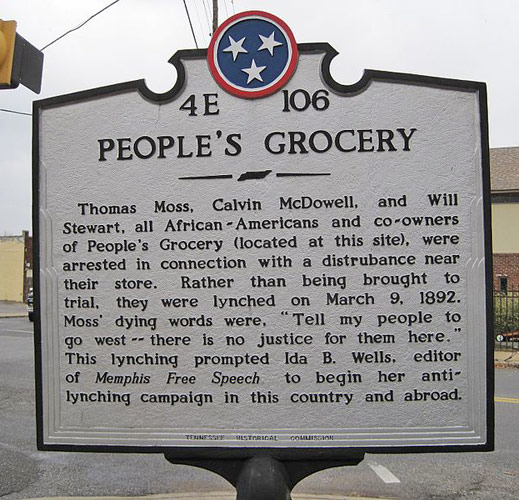
March 9, 1892: three young black men, Thomas Moss, Calvin McDowell, and Henry Steward, had opened the People’s Grocery Company in Memphis, Tennessee. Located across the street from a white-owned grocery store that had been the local black community’s only option, the new business reduced the white store’s profits and threatened the racial order by forcing whites to compete economically with blacks.
A white mob formed, intent on using force to put the black grocery out of business, and the black grocers armed themselves for defense. When the mob attacked, shots were fired and three white men were wounded. Moss, McDowell, and Steward were arrested and sensational newspaper reports published the next day fanned the flames of racial outrage. On March 9, 1892, a white mob stormed the Memphis jail, seized all three men and brutally lynched them. No one was punished for the killings.
Ida B. Wells, a 29-year-old black schoolteacher and journalist living in Memphis, was a friend of the three murdered men and was deeply impacted by their deaths. She published an editorial urging local blacks to “save our money and leave a town which will neither protect our lives and property, nor give us a fair trial in the courts, but takes us out and murders us in cold blood when accused by white persons.” As a result, a white mob destroyed her office and printing press. The mob had intended to lynch her but she was visiting Philadelphia at the time. More than 6000 African Americans heeded her call. Ms. Wells would devote her entire life to documenting and challenging the injustice of lynching through research, writing, speaking, and activism.
Isaac Brandon lynched
April 6, 1892: a mob of at least 80 white men broke into the jail in Charles City, Virginia, removed Isaac Brandon, a Black man, from his cell, ignoring the pleas of his young son, and lynched him on the courthouse lawn.
A few days prior, several white women alleged that a Black man had broken into their home and tried to assault them. When news of this event spread, suspicion quickly turned to Brandon. Allegations against Black people were rarely subject to scrutiny.
Isaac was promptly arrested and brought to the jail. Although no evidence linked him or his young son—whose name is not recorded in contemporary newspapers—to the alleged crime, both of them were arrested and held for several days in the jail.
On the evening of April 6, a mob of at least 80 white men arrived at the home of the sheriff and shared their plan to lynch Mr. Brandon. Although he was armed and charged with protecting those in his custody, the sheriff failed to protect Mr. Brandon or his son from the mob’s actions and the mob successfully broke through the jailhouse door without incident.
Mr. Brandon and his young son pleaded with the mob not to carry out the lynching as Mr. Brandon maintained his innocence, stating to the mob: “You are going to hang an innocent man.” Mr. Brandon’s young son clung to his father as the mob bound Mr. Brandon’s hands before his son was forced back into the jail cell as the mob took his father away. The mob hanged Mr. Brandon to a tree on the courthouse lawn.
Mr. Brandon’s body was left hanging outside the courthouse until the next morning, and contemporary accounts noted that members of the Black community were forced to bear witness to Mr. Brandon’s body in the town square. [EJI article]
Henry & Ephraim Grizzard lynched
April 27, 1892: two white girls reported that black men had assaulted them. Four or five black men were quickly arrested and taken to jail, including Ephraim Grizzard, and his brothers Henry and John. On this date, a mob seized and lynched Henry Grizzard.
April 30, 1892: a white mob lynched an African American man named Ephraim Grizzard in Nashville, Tennessee, just days after the lynching of his brother, Henry. In the middle of the afternoon, the unmasked mob dragged Ephraim Grizzard from the Nashville jail, stripped him naked, beat and stabbed him severely, and then hanged him from the Woodland Street Bridge. As Grizzard’s corpse swayed in the air, members of the mob riddled his body with bullets. Thousands of spectators viewed the brutal scene as Mr. Grizzard’s mutilated body was reportedly left on display for almost ninety minutes.
No one was held accountable for either of the brothers’ deaths. [We Remember Nashville article]
Burrell Jones lynched
October 13, 1892: a large white lynch mob killed Burrell Jones, Moses Jones, Jim Packard, and an unidentified fourth victim – all young black men – outside Monroeville, Alabama. News reports from the time vary greatly in listing the young men’s names and ages, but several reports indicate that the eldest of the four was nineteen years old, and that at least one of the others may have been as young as fifteen.
A couple of days before the lynchings, a white farmer and his daughter were murdered and their home set on fire. In the aftermath, nearly a dozen African American men and boys were arrested, jailed, and accused of committing or being an accomplice to the crime.
After law enforcement officials were able to coerce one of the accused into giving a “confession” that implicated three others, all four young men were declared suspects.
Once news of the “confession” spread, a mob of white men from Monroeville and surrounding communities went to the jail and demanded a lynching. In response, law enforcement officials handed the four young black men over to the mob. The mob took them just outside the city, near a bridge over Flat Creek, and hanged and shot all four young men to death. According to various news reports, the corpses “were cut down as soon as life was extinct and the bodies torn to pieces by the maddened mob,” then piled in “a large heap” and burned.
Henry Smith lynched
February 1, 1893: accused of raping and murdering a four-year-old girl, a posse hunted down Henry Smith was hunted down by a posse.
When returned to town, the local citizens proudly announced they would burn him alive. That boast was reported in news stories which traveled by telegraph and appeared in newspapers from coast to coast.
The killing of Smith was carefully orchestrated. On February 1, 1893, the townspeople constructed a large wooden platform near the center of town. And in view of thousands of spectators, Smith was tortured with hot irons for nearly an hour before being soaked with kerosene and set ablaze.
The extreme nature of Smith’s killing, and a celebratory parade that preceded it, received attention which included an extensive front-page account in the New York Times. And the noted anti-lynching journalist Ida B. Wells wrote about the Smith lynching in her landmark book, The Red Record.
“Never in the history of civilization has any Christian people stooped to such shocking brutality and indescribable barbarism as that which characterized the people of Paris, Texas, and adjacent communities on the first of February, 1893.”
Photographs of the torture and burning of Smith were taken and were later sold as prints and postcards. And according to some accounts, his agonized screams were recorded on a primitive graphophone and later played before audiences as images of his killing were projected on a screen. [ThoughtCo story]
Sam Bush lynched
June 3, 1893: a mob lynched a Black man named Sam Bush (had allegedly sexually assaulted a white woman) on the courthouse lawn in Decatur, Illinois. About 500 white people had descended upon the jail and 25 unmasked white men broke into the jail. Although multiple jailers were on duty and charged with protecting the men and women in their custody, they neglected to use any type of force to ward off the mob, who, for 20 minutes, sought to break down Mr. Bush’s jail cell door with hammers and chisels.
By the time Bush was brought outside, 1,500 white people had gathered in front of a telegraph post directly in front of the courthouse lawn to lynch him. In the final moments of Bush’s life, he knelt to pray and, according to newspapers, called “on Jesus to come and take his soul and forgive the men who were murdering him.” The mob then stripped Mr. Bush of his clothes, forced him atop a car, and hanged him.
Following the lynching, members of the mob distributed pieces of the rope used to hang Mr. Bush to the crowd as “souvenirs”—among those in the crowd were doctors, lawyers, and at least one minister. [EJI article]
Seay J. Miller lynched
July 7, 1893: a crowd of over 5,000 white people lynched a Black man named Seay J. Miller in Bardwell, Kentucky, for allegedly killing Mary and Ruby Ray, two young white girls, despite ample evidence of his innocence.
Statements from Mr. Miller’s wife and from law enfocement witnesses indicated that Mr. Miller was not even in Kentucky on the date the girls were killed, and multiple eyewitnesses identified the Ray girls’ killer as a white man. Even John Ray, the girls’ father, was unconvinced of Mr. Miller’s guilt. Frank Gordon was the sole witness who implicated Mr. Miller, but he originally told police that the person he saw was a white man—as did other witnesses. Mr. Gordon changed his statement only after the county sheriff threatened to charge him as an accomplice if he did not do so. This same sheriff handed Mr. Miller over to a crowd of thousands of white citizens to be lynched.
Around 3 pm, the heavily-armed mob hanged Mr. Miller from a telephone pole, shot hundreds of bullets into his body, then left his corpse hanging from the pole for hours. Afterward, white people cut off his fingers, toes, and ears as “souvenirs,” and then burned Mr. Miller’s body in a public fire. [EJI article]
Bob Hudson killed
October 9, 1893: according to reports, in Weakley County, Tennessee the wife of a Bob Hudson, both African-American, had filed charges of assault and battery against a white man, who was subsequently arrested and fined
On this date, ten masked white men dragged Mrs. Hudson from her home and whipped her severely. When Bob Hudson ran to his wife’s defense, the mob shot and killed him. Including Bob Hudson, at least five African American victims of racial terror lynching were killed in Weakley County, Tennessee, between 1877 and 1950. [EJI story]
Interracial Couple lynched
January 12, 1896: a mob of twenty men gathered around the home of Patrick and Charlotte “Lottie” Morris in Jefferson Parish, Louisiana, and set it ablaze. Mr. Morris, a white railroad hand, and his wife, a black woman, had garnered the ill will of the community “on account of their difference in color” as well as their operation of a gathering place and hotel for black people.
The mob first attempted to burn down the Morris’ home at 11:00 that night, but Mr. Morris discovered the fire and extinguished it. By midnight, the mob set a fire that could not be controlled. When the couple attempted to escape the flames through the front door of their home they were met with a barrage of gunfire. Mrs. Morris was shot and killed at the doorstep while Mr. Morris was maimed by a shot to his leg.
The Morris’ twelve-year-old son witnessed the events and escaped through the back door of the home. As the boy ran for safety, the mob shot into the darkness after him but missed. Patrick Morris Jr. spent the night hiding underneath a nearby home in the neighborhood.
The next morning, community members found that much of the Morris’s home had been destroyed by the fire. Mr. and Mrs. Morris’s charred remains were found on their bed inside the home. A coroner’s examination revealed that one of the bodies had been decapitated, though it was unclear whether this act was carried out before or after death. Charlotte Morris was sixty-eight years old and Patrick Morris was fifty-eight years old. [Black Then article]
Sidney Randolph lynched
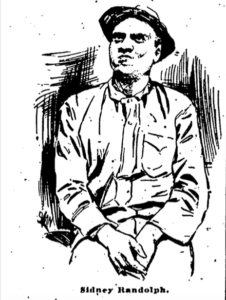
July 4, 1896: Sidney Randolph, a native of Georgia in his mid-twenties, was lynched in Rockville, Maryland on July 4, 1896 by an officially-unidentified group of white men from Montgomery County. The full story of Sidney Randolph’s murder was connected to the mystery involving an axe-wielding attack on the Buxton family of Gaithersburg in May of that same year, and the subsequent death of the youngest child, Sadie Buxton. Though professional detectives were brought in from both Washington and Baltimore to investigate the case, local residents of Gaithersburg took it upon themselves to find and/or create circumstantial evidence implicating Sidney Randolph, a stranger to the area who had no motive and consistently maintained his innocence. Removed to the jail in Baltimore to avoid an immediate lynching, Randolph survived repeated interrogations while imprisoned from May 25 until July 4, when a masked mob of white men dragged him from his cell in the Rockville jail, brutally beat him, and hanged him from a tree just outside of town along Route 355. His murderers were never identified or brought to justice for this crime. [Montgomery History article]
William Wardley Lynched
December 7, 1896: William Wardley, a Black man, was lynched by an armed mob of white Irondale residents. That day, Mr. Wardley, along with two companions, attempted to purchase apples from a local grocery store. The merchant refused to accept Mr. Wardley’s money because he assumed it was counterfeit..
Based on this accusation, a mob that included a local minister and a police constable pursued Mr. Wardley and his companions before fatally shooting Mr. Wardley. His body was later found along a railroad track a little over a mile outside of town. His two companions survived.
After the lynching of Mr. Wardley, the U.S. Treasury Department investigated the counterfeit claim and proved the money was real. However, the Treasury Department’s report did not mention Mr. Wardley’s death, and white residents continued to maintain the false counterfeit claim to justify the mob’s violent actions. The local press, sympathetic to the mob, reported that Mr. Wardley caused his own death to avoid capture by the authorities. No one was ever held accountable for William Wardley’s lynching. [EJI article]
Frazier Baker
February 22, 1898: Frazier Baker, an African American who had recently been appointed postmaster of Lake City, S.C., and his infant daughter, Julia, were killed and his wife and three other daughters were maimed for life when a lynch mob set after them. Citizens of the small town of 500 residents set fire to the post office, where the Bakers lived, and shot them as they ran out.
John Henry James
July 12, 1898: a Black man named John Henry James was lynched near Charlottesville, Virginia after being falsely accused of assaulting a white woman. Although at least 150 unmasked white men were involved in the lynching – and the police chief and county sheriff were present when Mr. James was lynched – no one was ever held accountable for his killing. Mr. James’s lynching was later celebrated by several hundred more white people who gathered to see his body as it was left hanging for hours. [EJI article]
Never Forget American Lynching
1897 – 1898
Charles Lewis Lynched
December 10, 1897: in Lawrence County, Mississippi a white family was found murdered. A surviving 5-year-old child claimed a black man did it. Officials brought several black male “suspects” before her and she identified one — a man named Charles Lewis — as the perpetrator. A mob of hundreds immediately formed and lynched Lewis.
Although early accounts alleged only one perpetrator, the white community was unsatisfied to lynch only one man, and continued to “investigate” the white family’s murders.
December 15, 1897: a group of 30 white men approached a group of black men, including an acquaintance of Charles Lewis and coerced him into saying that a man named Tom Waller had also been involved in the crime. Though another man in the group insisted this was not true, the unsubstantiated allegation was enough to seal Mr. Waller’s fate.
Soon after he was taken into custody, a growing mob of 400 people seized Waller from law enforcement and conducted a “sham trial”; newspapers reported that several men “held court under a tree,” where Waller was interrogated as a rope was placed around his neck. Some men reportedly suggested that the “trial” be delayed a week because the “evidence” was so scant, but the rest of mob rejected that idea and instead insisted that Waller be lynched that night.
Newspapers later explained that the mob preferred to lynch Mr. Waller immediately because waiting “meant standing guard all night in the cold, and most of those present did not relish this at all.”
As the hundreds of white men in the mob grew “hungry,” press accounts described, “a wagon load of provisions” including fish and lobster was brought forward and everyone “indulged in a hearty supper” before continuing their deadly plan.
The mob ultimately hanged Tom Waller on the night of December 15th, on the same hill where Mr. Lewis had been lynched five days earlier, and left his body hanging until 10am the next morning.
Frazier Baker Lynched
February 22, 1898: Frazier Baker, an African American who had recently been appointed postmaster of Lake City, S.C., and his infant daughter, Julia, were killed and his wife and three other daughters were maimed for life when a lynch mob set after them. Citizens of the small town of 500 residents set fire to the post office, where the Bakers lived, and shot them as they ran out. [Black Past article]
Four Lynched
August 10, 1898: a white mob seized Will Sanders, Rilla Weaver, Dennis Ricord, and Manse Castle from a jail in Clarendon, Arkansas, and lynched them before they could stand trial.
A few weeks prior, a white woman named Erneze Orr allegedly hired the four to kill her husband, John T. Orr. After the four were arrested for this alleged offense, a mob of white community members quickly formed—and on three separate occasions, the mob convened at the jail intent on lynching them. Despite these repeated threats, officers refused to move the group to a safer location as they awaited trial.
On August 10, the white mob stormed the jail a final time. Rather than protecting the people in his custody, the sheriff turned the jail keys over to the mob. Newspapers reported that he had been persuaded to open the jail doors and let the mob enter “by their earnestness.”
Mrs. Orr, the white woman who allegedly orchestrated her husband’s murder, was also being held at the jail. She reportedly poisoned herself shortly before the mob’s arrival. Though contemporary reports note that she was still alive when the mob stormed the jail, the mob left her and took only the four Black people from the jail.
The mob hung Mr. Sanders, Ms. Weaver, Mr. Ricord, and Mr. Castle from the tramway of a nearby sawmill with signs affixed to them that read “This is the penalty for murder and rape.” Their bodies were then left on display for hours to terrorize the entire Black community. [EJI article]
Never Forget American Lynching
1899
Sam Hose lynched
April 23, 1899: Sam Hose had been employed by a wealthy white man named Alfred Cranford in Newnan, Georgia. Cranford owed Hose money but refused to pay him and as arguments escalated between the two men, Cranford bought a gun and threatened Hose. When Cranford was killed soon after, Hose was accused of killing the white man and assaulting his wife.
A $500 reward was posted for Hose’s capture and hundreds of white residents launched what was described as the “largest manhunt in the state’s history.” Local newspapers published sensationalized accounts of the allegations against Hose, dehumanizing him and reinforcing dangerous racial stereotypes of Black men as predators.
He was captured and because Governor Candler had ordered out the troops, the mob decided that the execution needed to take place immediately and within minutes, Sam Hose was hanging from a tree. Hose’s execution was extremely brutal. He initially refused to confess, but after his ears were cut from his head, he claimed responsibility for the crimes. The Atlanta Constitution reported that 2000 witnesses watched as he was burned alive and his body cut and mutilated. Peculiarly, the man responsible for dousing Hose’s body and clothes in kerosene was a stranger from the North, who was reported as saying that, though he did not know how people from his part of the country would respond to this, he felt the need to avenge the terrible crimes that had been committed. Even Hose’s bones were taken from the scene as souvenirs.
Lije Strickland and Albert Sewell lynched
April 24, 1899: at some point during his lynching, Sam Hose (see above) was said to have implicated Lije Strickland, a preacher, in the murder. That same night, the same mob fell upon Rev. Strickland and despite pleas and explanations from the plantation owner Major Thomas who repeatedly vouched for Strickland’s innocence, a crowd took Strickland. Despite Thomas’s repeated pleadings and insistence of his innocence from Strickland himself, he was murdered.
The Detroit Evening News reported, “The body of Lige Strickland, the negro who was implicated in the Cranford murder by Sam Hose, was found this morning swinging to the limb of a persimmon tree…. Before death was allowed to end the sufferings of the Negro, his ears were cut off and the small finger of his left hand was severed at the second joint. One of these trophies was in Palmetto to-day. On the chest of the Negro was a scrap of blood-stained paper, attached with an ordinary pin. On one side this paper contained the following: “We must protect our Ladies.”
The same day, the crowd also sought out and lynched an Albert Sewell, a Black man, who had reportedly voiced a negative view of the Hose and Strickland lynchings. [Times-Herald article]
Mitchell Daniel lynched
April 27, 1899: a Black man named Mitchell Daniel was lynched by a white mob in Lee County, Georgia, for “talking too much” about the brutal lynching of Sam Hose four days earlier.
As a Black community leader, Daniel reportedly spoke out against the injustice of lynching and denounced Hose’s fate. This soon made him a target.
And on April 27 Mitchell Daniel’s dead body was discovered on the side of a Lee County, Georgia, road—riddled with bullets. Sparse local news reports attributed the lynching to Mr. Daniel’s white neighbors, but no one was ever held accountable for his death.
Day of Fasting
June 4, 1899: the Afro-American Council declared a national day of fasting to protest lynching and violence against African Americans.
Frank Embree lynched
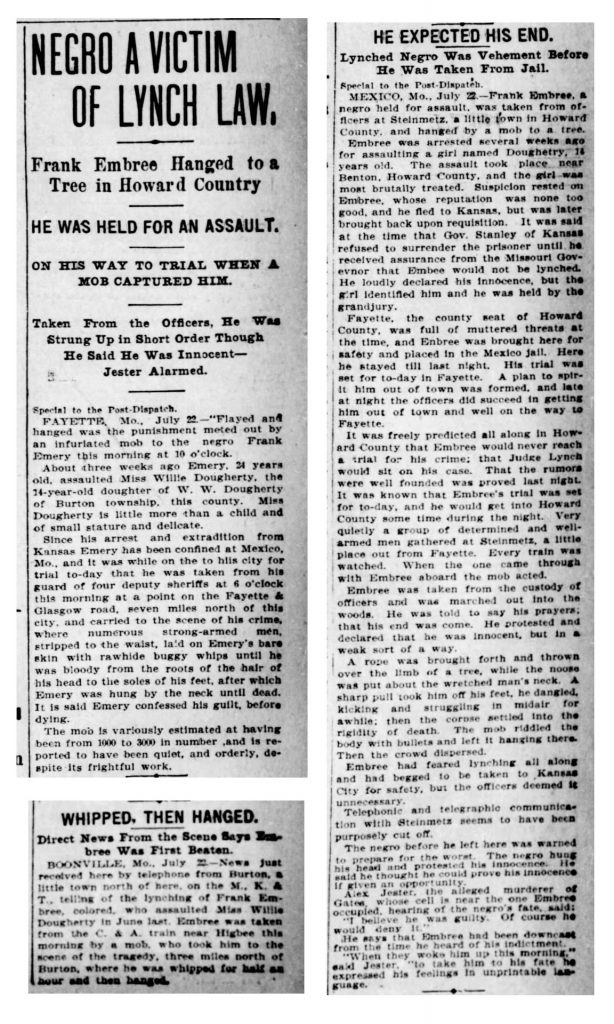
July 22, 1899: a white mob abducted Frank Embree from officers transporting him to stand trial and lynched him in front of a crowd of over 1,000 onlookers in Fayette, Missouri.
About one month earlier, Frank Embree had been arrested and accused of assaulting a white girl. Though he was scheduled to stand trial on July 22, the town’s residents grew impatient and decided to take “justice” into their own hands by lynching Mr. Embree instead.
According to newspaper accounts, the mob attacked officers transporting Embree, seized him, and loaded him into a wagon, then drove him to the site of the alleged assault. Once there, Mr. Embree’s captors immediately tried to extract a confession by stripping him naked and whipping him in front of the assembled crowd, but he steadfastly maintained his innocence despite this abuse. After withstanding more than one hundred lashes to his body, Embree began screaming and told the men that he would confess. Rather than plead for his life, Embree begged his attackers to stop the torture and kill him swiftly. Covered in blood from the whipping, with no courtroom or legal system in sight, Embree offered a confession to the waiting lynch mob and was immediately hanged from a tree.
Never Forget American Lynching
For subsequent chronologies, see…

